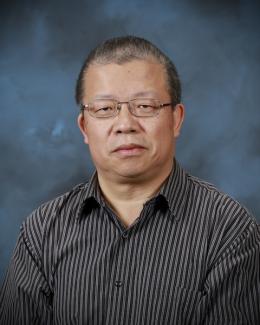
Bio
Yingzhong received his Ph.D. in physical chemistry from Umeå University, Sweden, under the supervision of Prof. Tomas Gillbro in 1999. His graduate research was focused on an ultrafast optical spectroscopic study of electronic excitation energy and electron transfer processes in purple and green photosynthetic bacteria. He then joined the group of Prof. Alfred Holzwarth at the Max-Planck Institute for Radiation Chemistry (now the Max Planck Institute for Chemical Energy Conversion) as a postdoctoral researcher, where his work was centered on time-resolved spectroscopic characterization of artificial photosynthetic systems. Yingzhong moved to California in 2000 where he had an extended stay in the group of Prof. Graham Fleming, University of California, Berkeley. There he fortunately had the opportunities of exploring several challenging questions, which include the physical mechanisms underlying the nonphotochemical quenching process that regulates photosynthetic light harvesting in plants as a protective response to excessive incident light radiation, ultrafast electronic excited-state phenomena in semiconducting single- and doubled-walled carbon nanotubes, and laser-induced drug delivery, etc. These studies involved use of a suite of complementary ultrafast laser spectroscopic tools, including two- and three-pulse photon echo, heterodyne-detected transient grating, and frequency-resolved transient absorption spectroscopies, etc. In 2009, Yingzhong joined the Chemical Sciences Division as a staff member, where he initiated a systematic ultrafast optical spectroscopy and microscopy research at ORNL, with specific focuses on understanding fundamental electronic excited-state phenomena with high spatial, spectral and temporal resolution. His research has since span from low-dimensional nanostructures, molecular systems to polymeric and semiconducting photovoltaic materials. In recent several years, he has been leading a systematic research effort to unravel the complex electronic dynamics in spatially heterogeneous systems using co-registered multimodal all-optical imaging techniques including femtosecond transient absorption, time-integrated and time-resolved photoluminescence, transmission and confocal reflectance microscopies in combination with specifically developed data analysis algorithms. His latest imaging efforts are focused on developing a separate multimodal optical microscope involving total internal reflection enabled wide-field Coherent anti-Stokes Raman scattering (CARS), fluorescence, second-harmonic and electronic sum-frequency generation microscopies for biological applications. Very recently, Yingzhong’s research has been further extending to quantum light spectroscopy and microscopy, an emerging field with enormous potential for non-invasive probing of biological and chemical processes in vivo and in operando as well as various highly promising imaging applications at truly ultralow light levels.

